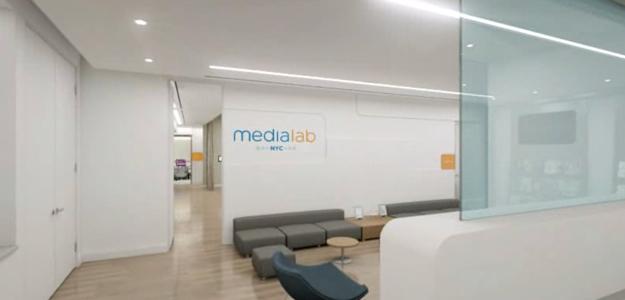 Exactly what do you actually do with the living room of the future after you’ve managed to build it?
Exactly what do you actually do with the living room of the future after you’ve managed to build it?
That’s not a rhetorical question, by the way; Time Warner unveiled its 9600 square foot state-of-the-art facility designed and built to study customer behavior in January this year, and now it wants to know just what it should do with its particular brand of high-tech surveillance.
The Medialab, as TW calls the space, is based on the company’s Manhattan Time Warner Center headquarters and exists to, in official terms, “[incorporate] cutting-edge technologies and research techniques [to provide] an unmatched ability to test consumer engagement throughout the entire 360° media-to-retail experience.” Complete with biometric monitoring and eye-tracking capabilities, as well as focus group space for the old-fashioned analysts out there and broadcast capabilities to finetune test content, the massive location includes retail space, video game stations, an “in-home living-room simulation” and a 50-seat screening space to best sample product in a variety of settings. According to the project’s official website, “In order to foster the company’s continued growth as a progressive supplier of engaging content, Time Warner and its core divisions–HBO, Time Inc., Turner, and Warner Bros.–consider the Medialab an essential instrument in understanding consumer behavior, evolving media habits, and industry trends.” There is, it seems, only one problem: What to use it for.
Via the Hollywood Reporter, it turns out that Time Warner’s solution to that problem is to open the space up to academic organizations, via an open RFP (Request for Proposals, for those who didn’t know) from those who have an idea or theory that they’d like to use the Medialab to prove. “The Time Warner Medialab wishes to fully utilize the capabilities of the Time Warner Medialab for university‐based research initiatives, especially for exploration, innovation, and original thinking in the arena of media and its usage,” the RFP explains, adding that “For that reason, the Time Warner Medialab plans to make the capabilities of the Medialab available to university research groups, as well as financially support use of the facility, in order to further the quality of research available in the public domain.”
(That last part is interesting; the RFP explicitly states that the Medialab is only available to academics for research that “will not be deemed proprietary in any way.” That’s not the only request TW is making of applicants; the RFP also states that “All writings, findings, and/or publications resulting from completion of research must include acknowledgement of the support of the Time Warner Medialab.”)
The Medialab is accepting proposals until November this year; those interested in finding out more can download the application process directly from the Time Warner Medialab website, and then work on brevity; proposals have to be 300 words or less (That’s less than two thirds the length of this blog post, to give you some idea of context).
Editors' Recommendations
- Humanity’s media habits shifted radically in the 2010s. What do the 2020s hold?
- Here’s an A.I. preview of what climate change will do to your neighborhood
- What Bill Nye’s solar sail means for the future of space travel
- Want to work in the stars? Here are six future space jobs you could hold
- Future smart clothes promise to keep you the perfect temperature at all times


